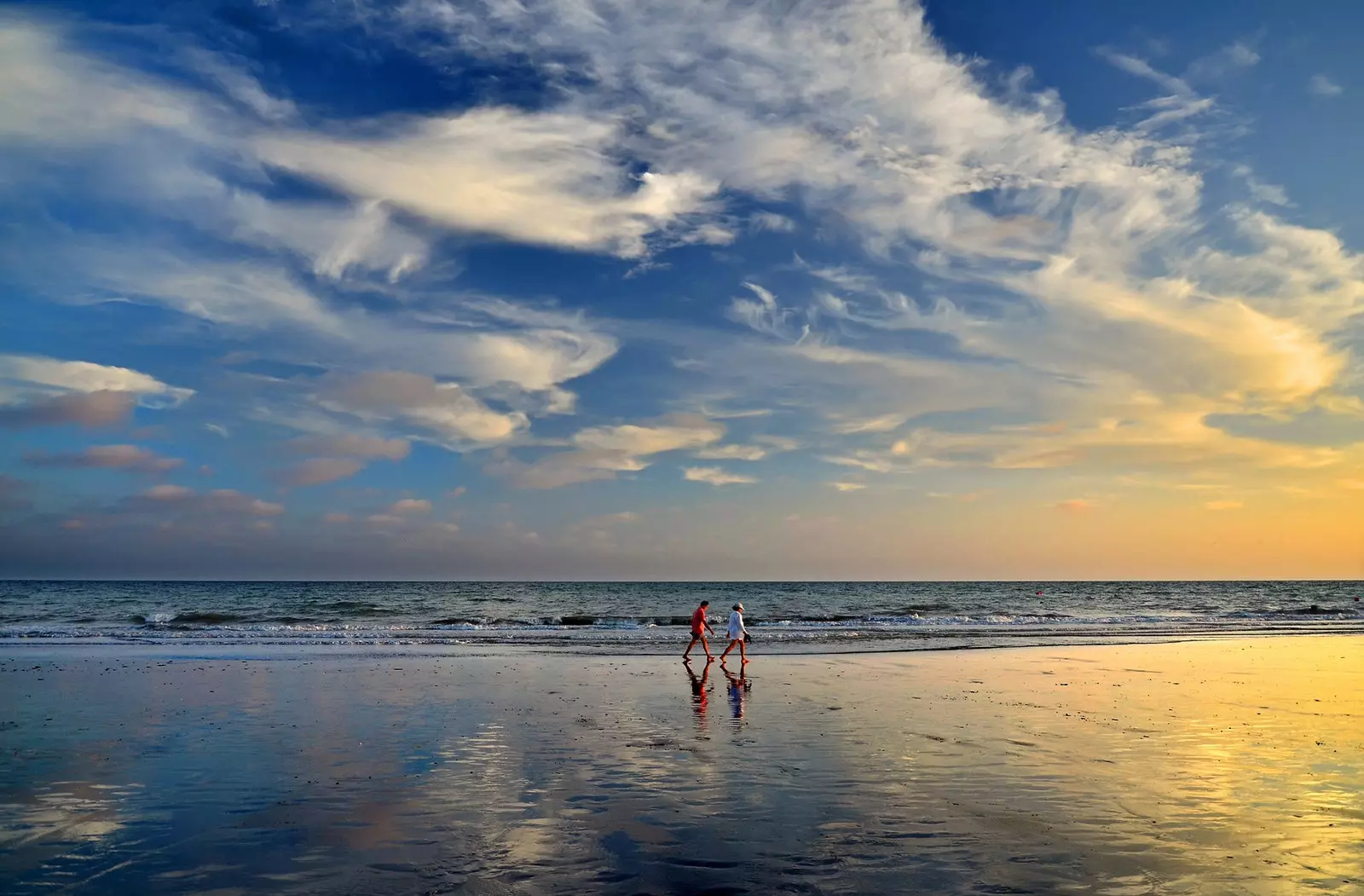
Huelva out of season
It is already known that in Traveler we like to go a little against the current. That there is nothing that gives us more pleasure than turn things around . That people go to the coast of ** Huelva ** in summer to enjoy its beaches? Well, we do it in winter.
So we headed the A-49 , we take the detour to Portugal, and when we come to realize, we are leaving wrap by that light that Huelva has that we don't know where it comes from but that makes everything more special. An immensely blue sky, and immensely clean —where did the clouds go?— greets us as soon as we arrive at Islantilla , and while we unload our luggage and get ready to check-in, we already glimpse out of the corner of our eye that great treasure that, lucky them, they have in these parts: the sea.
Oh, blessed Andalusia.
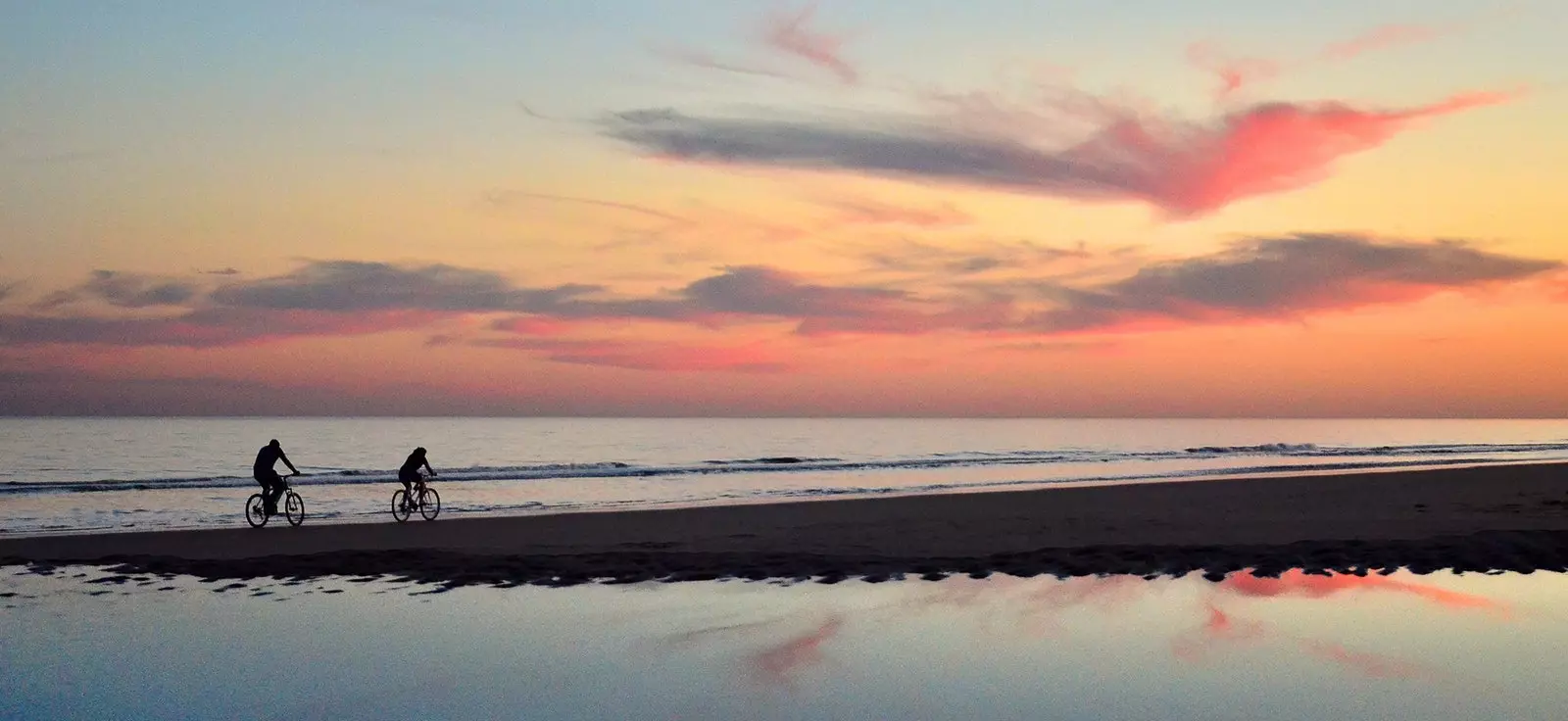
Huelva out of season
WE LOVE HUELVA
Amemos, from “love”, like the name of the resort where we stayed for a few days. The AMA Islantilla Resort It is a complex of apartments and rooms —be careful, it also has apartments and villas for sale— with a Nordic-Mediterranean touch that conquers us from minute 0 . This concept —which we have just invented, it must be said— exists for a reason: its owners, dutch , they wanted to bring a little piece of Holland here, to paradise.
For this reason, when designing the complex, they pulled Andalusian forms for the exterior , but from a northernmost aspect for the interior : wooden floors brought from the Netherlands, furniture with simple and elegant lines, prevailing minimalism in each room and an atmosphere that invites you to relax.
Something easy to fulfill, things as they are, due to its infinite offer. That one wants to jump into the water in one of its three outdoor pools, one of them heated? Perfect. That you prefer to pamper yourself at your spa, where between treatments —wonderful Hawaiian massage—, indoor pool, jacuzzi, sauna or hammam , the hours pass without one noticing? Fantastic. You want unwind at the Islantilla golf course , two steps —literally— from the resort? Do not talk more!
To top it off, the hotel has Fandado , an elegant relaxed atmosphere restaurant whose menu offers a list of carefully prepared dishes with absolutely exceptional raw material. Their caramelized apple salad with roasted peppers or their grilled tuna are essential. To cry with emotion.
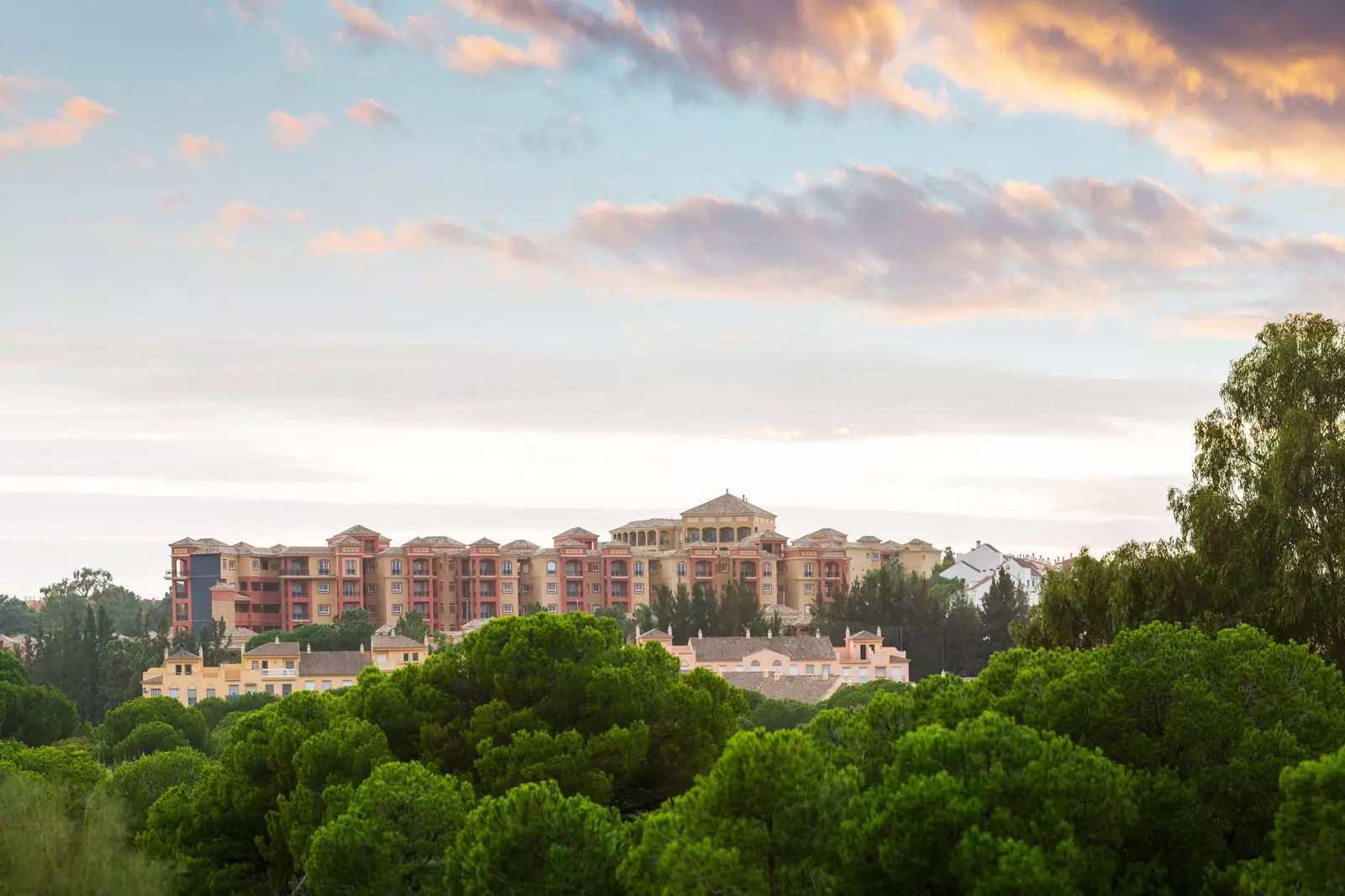
rest here
Although, for emotion, the one that enters us when they tell us that the resort also has a bike loan service . We don't think about it for a second and we are going to explore this small fishing village on two wheels.
ISLANTILLA, WITH A FLAVOR OF THE SEA
We already said it at the beginning: if in summer Islantilla is characterized by the fact that it does not fit a pin, winter gives us almost, almost, a ghost town for our lonely enjoyment . And what peace. What a silence. What harmony. What a treat.
Mounted on our bikes we put heading to the sea , which we have been wanting for several paragraphs. On the way we came across the paths of one of the most beautiful gardens in the town: the Park of the Heads . And although the steep slopes do not make it easy for us, the environment convinces us that it is worth the effort: the park is located on a Quaternary geological formation and offers views of the sea like few others.
And we got to promenade , where it is the sea breeze that invades us. And we go through it up and down, from left to right, to one side and to the other, passing by just a couple of dozen neighbors who walk along the beach . If Islantilla usually reaches 100 thousand inhabitants in summer, in winter barely reaches 3 my l.
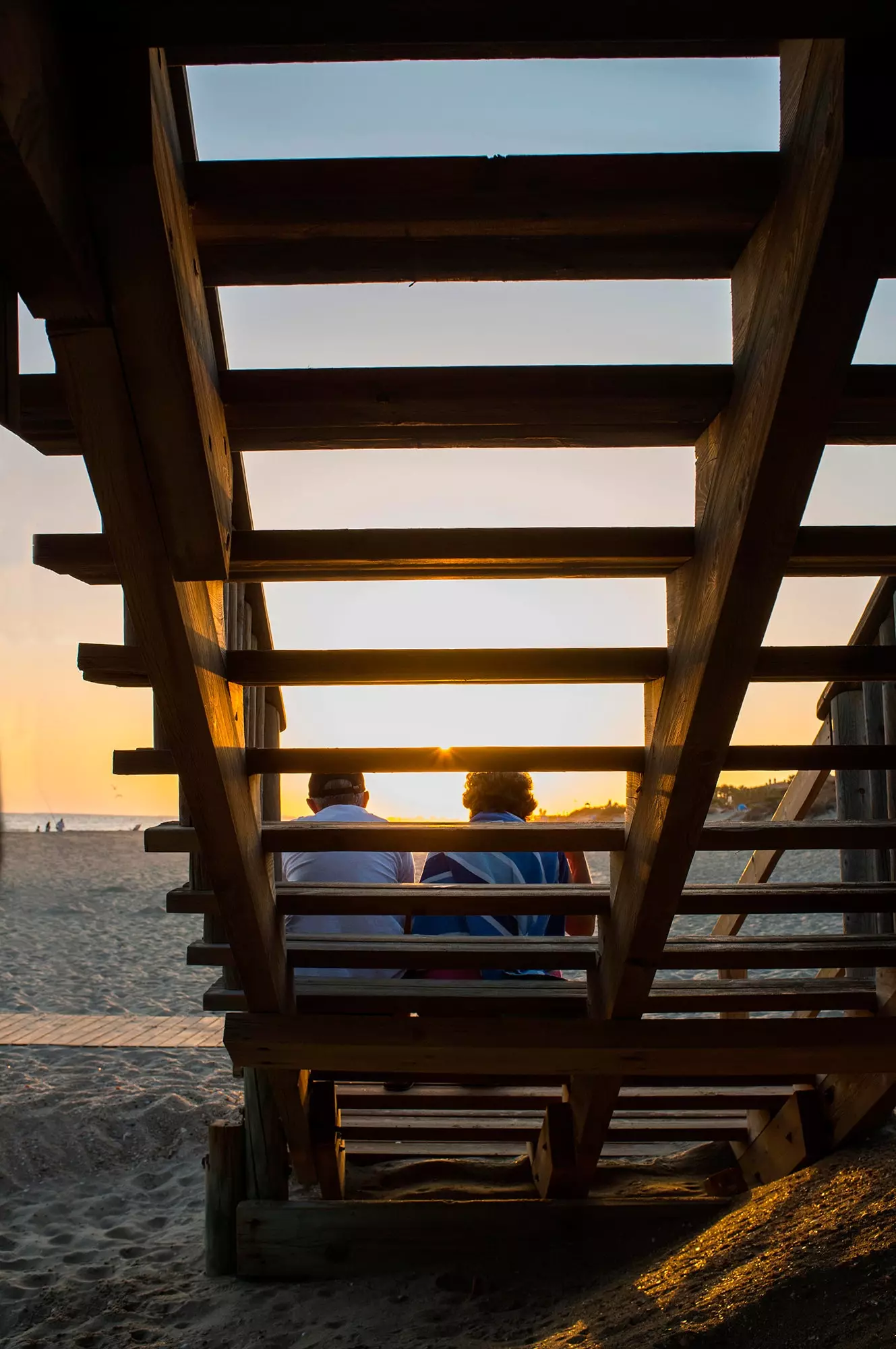
Huelva, a paradise out of season
we arrived at seaside neighborhood and we have no choice but to put the bikes aside. Can there be a more picturesque place than this? A handful of colored cases dot the sand giving us an authentic postcard. Next to them, the fishing boats are still wet after the work of the last night: the sailors usually leave at 6 in the morning to the sea, and after 5 or 6 hours, they return with the caught goods — cuttlefish, prawns and a variety of fish —, which goes, for the most part, to neighboring businesses.
Now, as we watch them rearranging nets and getting gear ready for the next outing, we're off to Trasmallo , one of the neighborhood bars. With some prawns from Huelva, some coquinas, some fried cuttlefish and some dressed tomatoes , life always feels better.
ZAMPU… WHAT?
gobblers A term that you have probably just read for the first time in your life and that we are going to talk to you about at length, that you know. P Because this is the reason that leads us to Lepe.
These are small social clubs where the townspeople with land and cattle would gather —and meets— after the working day to mingle, play cards and chat about the human and the divine . Always, yes, accompanied by a little wine: In the zampuzos, the centuries-old custom of stepping on their own grapes has been taking place. to store the must in barrels in the same place. A tradition that goes back centuries: Geoffrey Chaucer himself speaks of them in his best-known literary work, The Canterbury Tales.
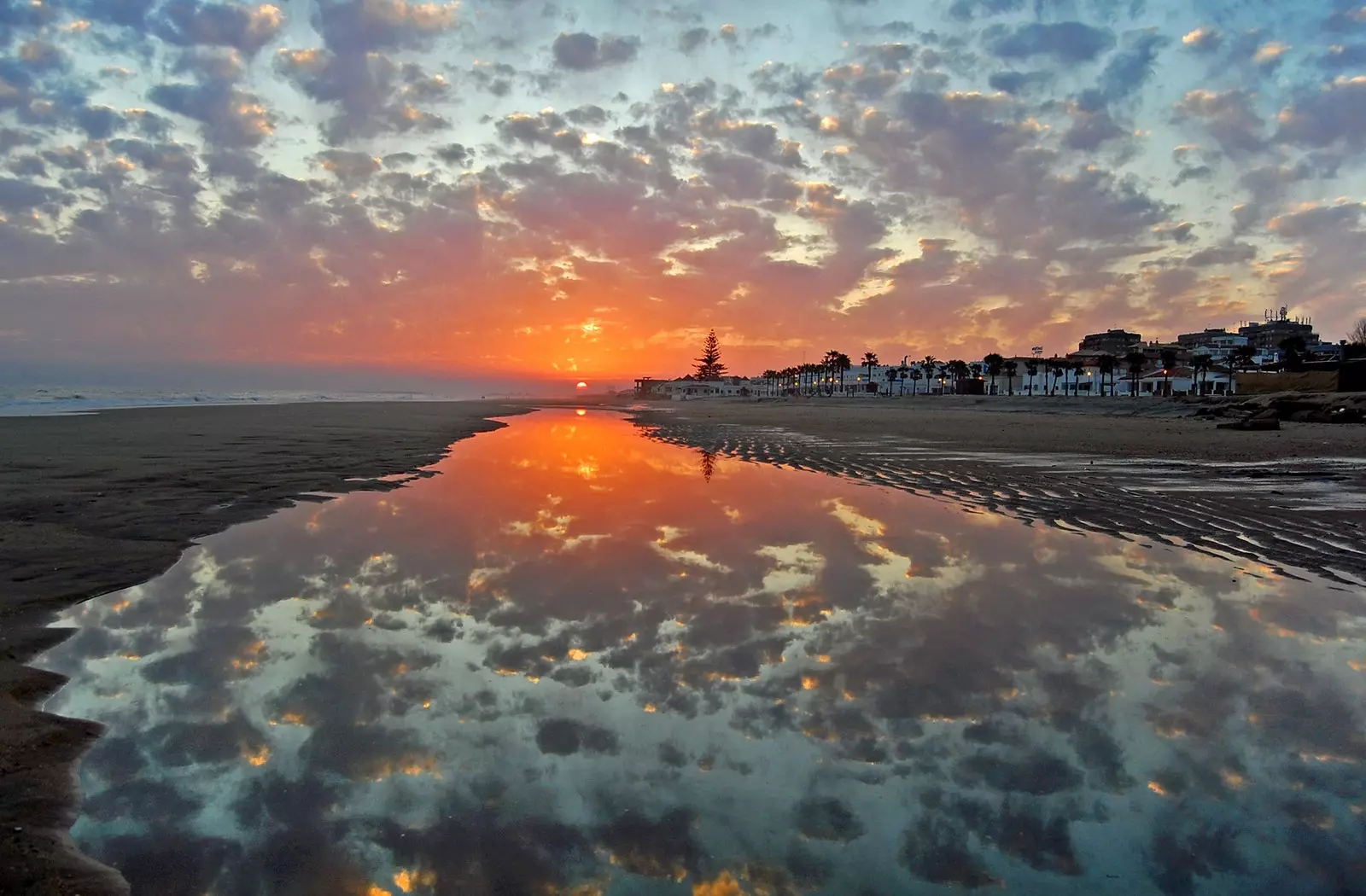
Lepe, in Huelva
Today, in Lepe, you can make a route that runs through the five zampuzos that remain active . In the oldest of all, the Rat , we meet Roque, third generation of the same family in charge of the business — estimates that the premises opened at the end of the 19th century —, who tells us from behind the bar that today it is no longer the same: the kids only drink soft drinks. The wine tradition, damn it, is in decline.
We, who refuse to let something so historic end up dying, ask you to send us a couple of them and, while we tasted at the bar , we take a look at the backyard, the common kitchen – no food is served here, but you can take your own and prepare it without problem – and the handful of peculiar tiles that decorate the walls. There is no more authentic place.
To finish taking Lepe's pulse, nothing like visiting the rest of the zampuzos — Ruperto, Contreras, Romera and Camarón —, take a walk through the shops of the Rincona street shopping or make a stop at the port, from where the views of the Terrón Natural Area they are spectacular.
WHO GIVES MORE?
At 4 in the afternoon, with British punctuality, we met with **Maribel, Rutas Marineras guide **, next to the fishing port of Christina Island , another of the Huelva towns that live facing the sea. So much so that its fish market is —attention— the first in Andalusia for sale of fresh produce and the second in all of Spain after the port of Vigo: 10 thousand tons of fish.
It turns out that this is the time when the trawlers , which have been taken between 12 and 16 hours fishing in the Atlantic —The purse seiners, the other type of fishing practiced in the area, have arrived in the morning—. The atmosphere is authentic the transfer of sailors, maximum . And while the seagulls flutter around us, eager to steal some other piece, the netters take pains to repair their gear by spreading them on the ground.
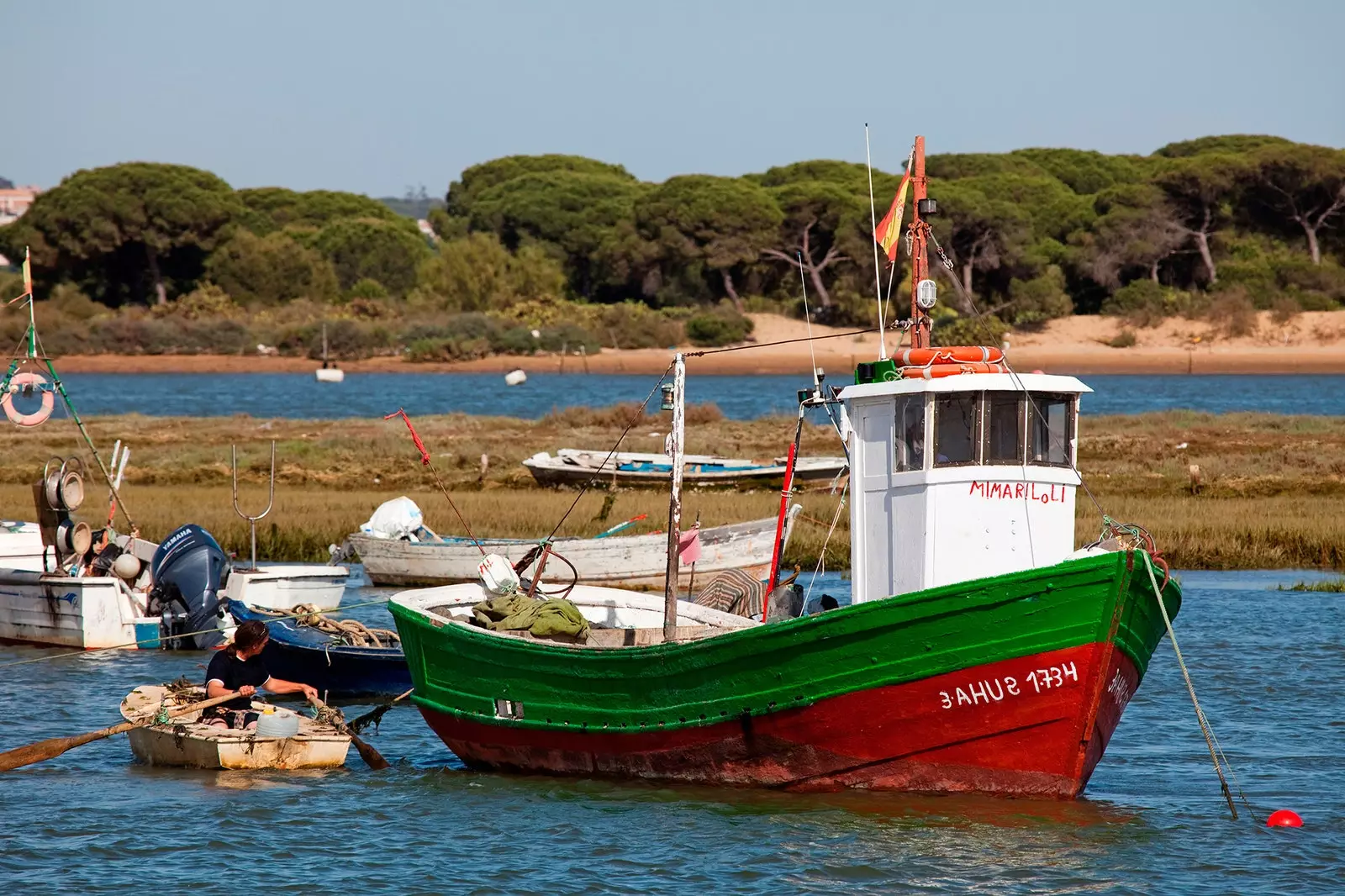
Port of Terrón, in Huelva
Just a few steps away, the fish market , the activity is frenetic: the boxes full of product are loaded from one side to another until they are weighed, labeled and placed on the conveyor belt that reaches the auction site. From a small platform we contemplate absorbed s the fight between businessmen for the best price : control in hand they concentrate on the bid, which is downward.
The activity motivates us so much that we decided to continue discovering another side of the town: the Isla Cristina Marshes Natural Area. And to do it we got on with Jesus in one of the small boats of Island Sea Excursions . He takes us, in an hour's drive, to learn everything about this ecosystem.
An ecosystem that was formed from the 1755 Lisbon earthquake , when this whole area emerged from the sea. Navigating the Ría Carrera, an arm of the Atlantic that goes into the land, we reach the virgin and protected heart of the area. When the tide rises or falls, a phenomenon that occurs here every 6 hours —and with a variation of 3.5 meters deep —, life around the place varies. How? For example, exposing the tongues of sand where the shellfish gatherers catch some of the delicacies which we will then drink in the bars of the town: the razors and clams are top level.
To finish, Jesus takes us to the area where the mussel rafts . And while he sounds 'Black Tears' by El Cigala over the loudspeakers, he surprises us with a Tapa of white prawns from Huelva and a fine wine from Condado . If there is a better plan than this, someone tell us!
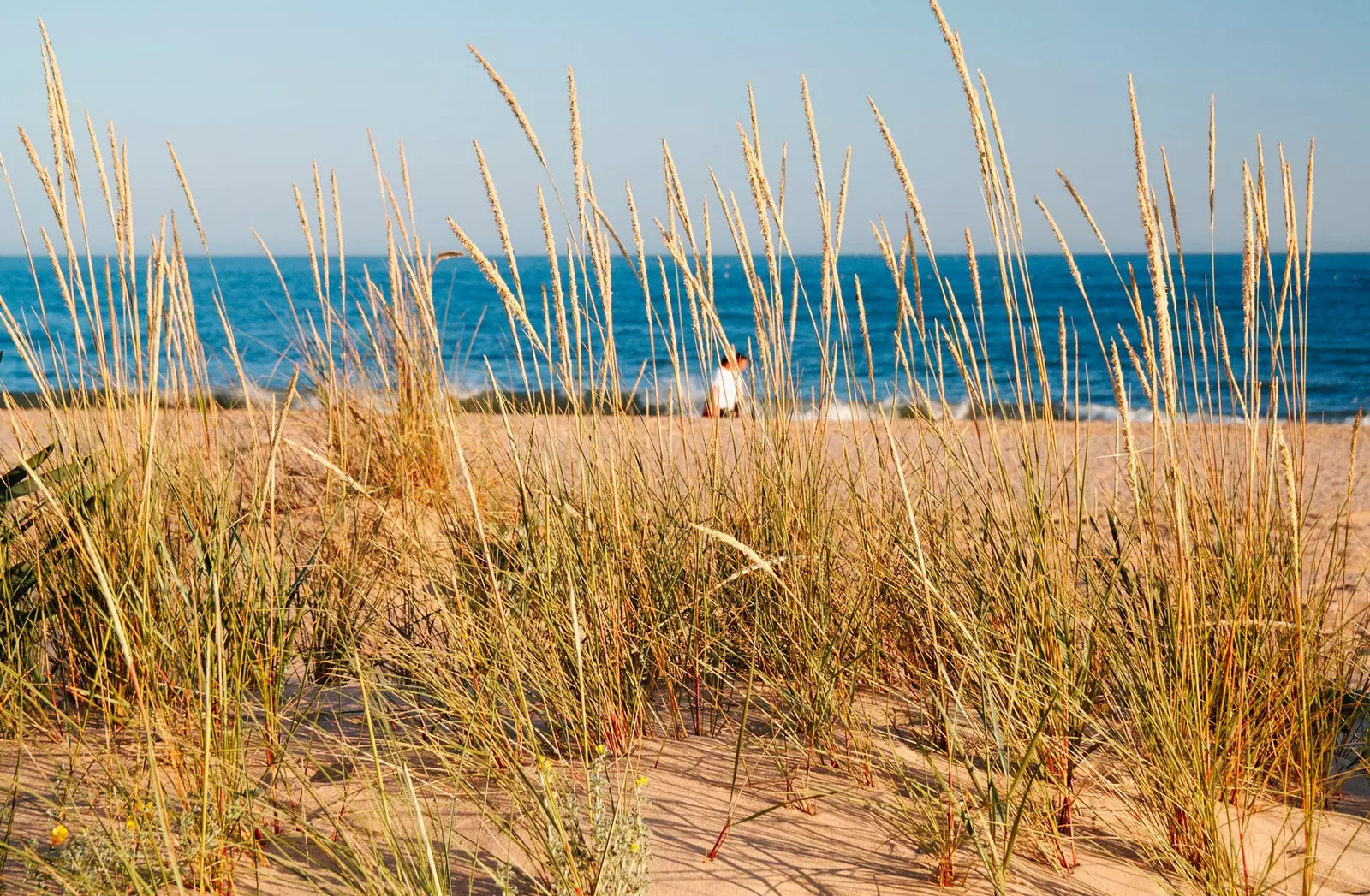
Isla Cristina, Huelva
BY SEA… AND BY LAND
But if traveling by boat is not your thing, there is another very original way to discover the charms of this little piece of the south. and is given by Sergio, a construction worker which, after the crisis, decided to renew itself. And boy did he do it! So much so that he brought it from Thailand a flashy tuk-tuk with which now causes sensation walking tourists through the streets of his homeland.
Through the streets, and again through the natural area, where we verify that our cicerone has discovered his true vocation: to talk about the benefits of this paradise. And while he reveals curiosities to us, he slips through dirt lanes and shows us beautiful corners , he also tells us about the immense variety of birds that inhabit the marshes s: gray herons, sandpipers, egrets or little egrets are just some of those that come out to meet us. The best gift of the experience? The group of flamingos that bid us farewell, in the middle of the marshes, at the end of the route.
But the place gives for more. For much more. And also the salt activity is a great protagonist here. In fact, in the case of the ** Salinas del Alemán **, it has been so since 1954, when a German cosmetics company, biomaris , decided to buy the plot and build and exploit the salt mines to take advantage of the minerals in the salt for their creams.
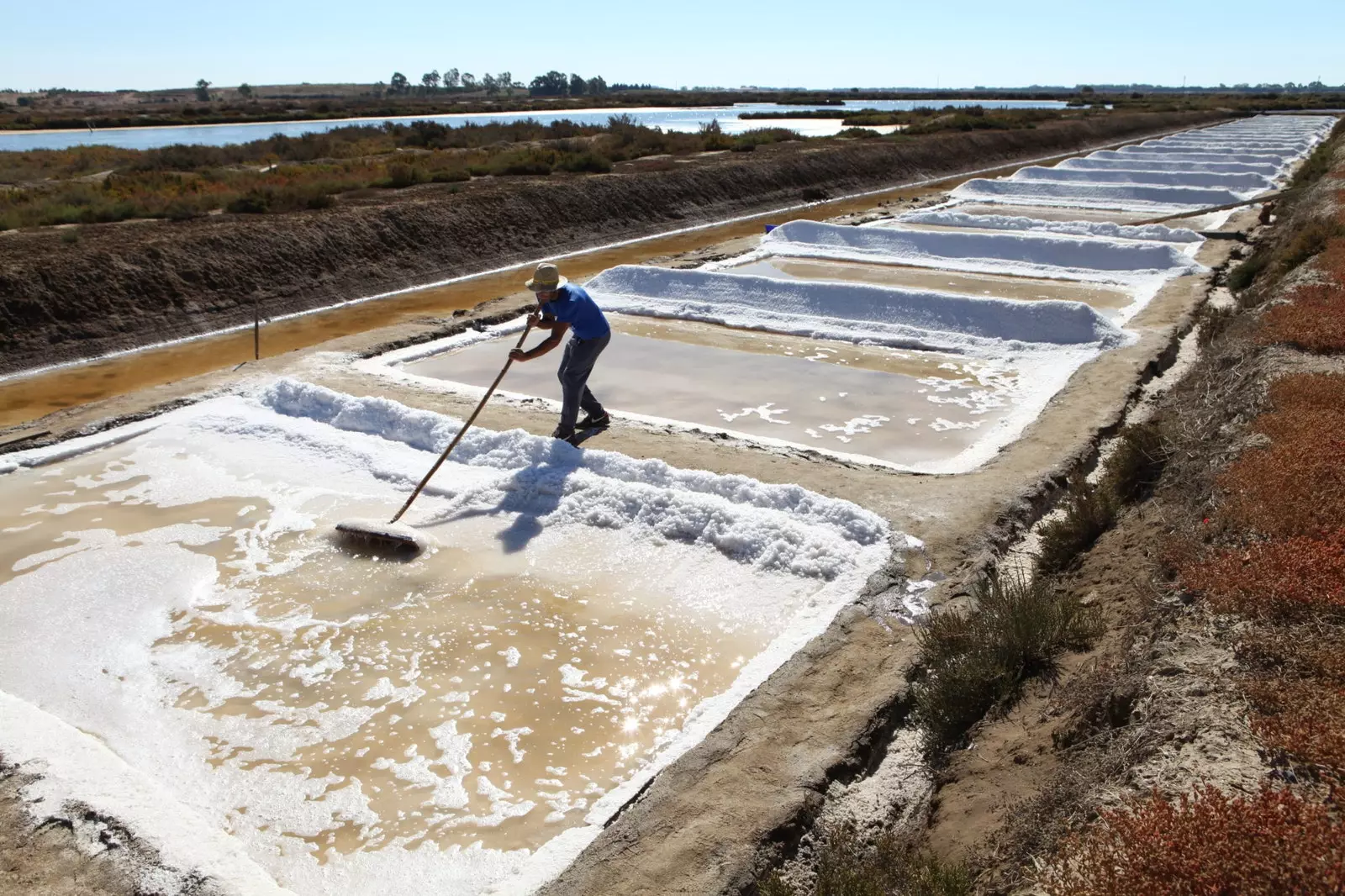
A unique place for a unique beauty
After passing through several hands and being surrounded by all kinds of stories —such as the one about John the German, his former manager, who was even said to be a real German spy— today the company is in the hands of Manuela Gómez , who was committed from the beginning to renew and revolutionize —already the fact that she was a woman in the world of salt, she was— the business.
Today, if something characterizes these salt mines, it is that they are the only ones that have been 100% handmade since they were built until today. That and the possibility of taking a guided tour to learn about the production process, which is concentrated in the summer months, and which takes the seawater to pass through different pools — heaters and ships — until the crystallization process is complete. The result? Three types of salt that are three treasures: fleur de sel, flakes and natural marine flower.
But here Manuela has known how to see further, and to the products that can be bought in her store —a true gourmet salt paradise—, she has added one more service: during the summer months her magnesium pools and baths are open to the public. of mud Different, healthy experiences in a unique environment.
Although unique, as always, it is the cuisine of a place. And what better way to end a trip than sitting at a table. Here we will have two options: either let ourselves be carried away by the good work and the trajectory of Grandfather Mañas or La Sal , two of the most acclaimed restaurants, or go for something more modern: ** Doña Lola , in Espacio Capitana, is our place.**
What better than saying goodbye to Isla Cristina with a taste of the sea? Well that.
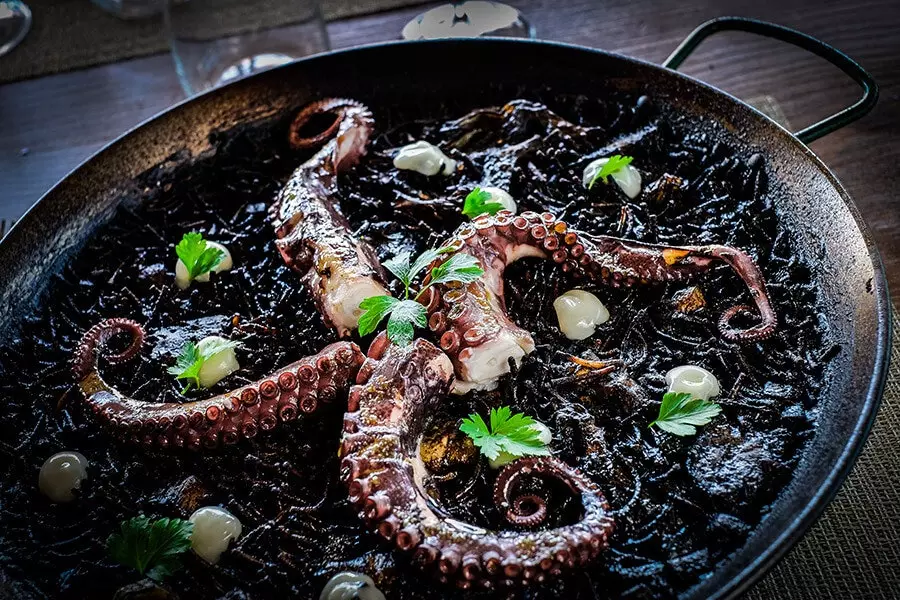
Doña Lola, in Espacio Capitana, is our place
